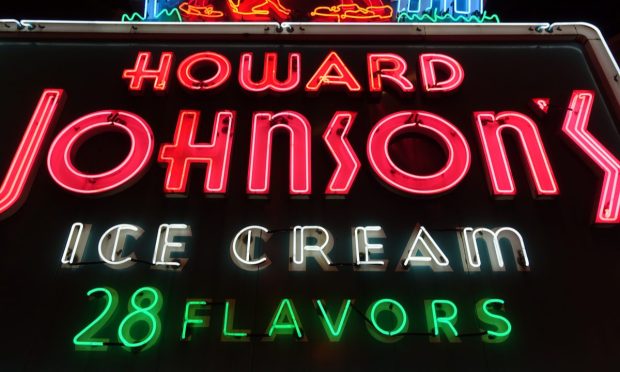Final Howard Johnson’s Closes, Illustrating Restaurant Industry’s Transformation

Many restaurants have shuttered their doors permanently in the past couple of years, but this one may hit Americans especially hard — the final Howard Johnson’s has closed.
Once ubiquitous, the chain’s last location, Lake George, New York, has been seen with a banner stating that the site is up for lease, according to the ABC affiliate in Albany, New York. The realtor, Exit Realty Empire Associates, informed the outlet that the property has been available for lease since December.
This unfortunate occurrence serves as a metaphor for the changes seen in the restaurant industry since March 2020. Howard Johnson’s was once the restaurant of America. According to a 2017 report from the Economist, in the ’70s, the hotel/motel/restaurant chain was the largest restaurant in the country, with more than 1,000 locations. In the mid-’80s, after a hospitality group acquired the hotel arm of the business, the restaurants became separately franchised.
The chain, known for its iconic orange roof, 28 flavors of ice cream and more, held on for nearly a century, from its founding in 1925 to its final location’s closing last year. According to a 2001 article in the Hospitality Review, the company was not as proactive as its competitors in reacting to changes in the restaurant industry, as other chains provided faster service and lower prices.
In the past two years, the “quick” in the term quick-service restaurant has been amped up, with the widespread adoption of digital ordering, the evolution of the channels powering these orders to be increasingly frictionless and consumers’ ever-increasing expectation of instant convenience rapidly transforming the industry. As such, the closure of the last standing Howard Johnson’s suggests the final twist of the knife: fast-food chains that cannot make good on the promise of speed will not be able to compete in the post-March-2020 QSR industry.
According to data from PYMNTS’ 2022 Restaurant Friction Index, created in collaboration with Paytronix, which drew from a survey of more than 500 managers of QSRs and full-service restaurants (FSRs) across the United States, 59% of QSRs now offer app ordering, 55% offer curbside pickup and 67% offer the ability to pick up orders at the drive-thru.
Read more: Loyalty Programs Best Way to Get Diners to Spend More
Moreover, these sorts of convenience-focused features separate successful restaurants from the rest. The study found that 100% of top-performing restaurants offer the ability to place orders online and pick them up in stores, while only a third of bottom performers offer the same. Similarly, 97% of top performers offer the ability to pay via a digital wallet, while only 53% of bottom performers do the same.
“Customer habits have forever changed, and our industry had to pivot quickly to [meet] this new demand,” John Haggai, president and chief operating officer of Burton’s Grill and Bar and Red Heat Tavern, told PYMNTS in an interview for the January/February edition of the Order to Eat Tracker®. “Before the pandemic, online ordering, reservations and paying online were all added amenities; now, they are necessities. Customers want flexibility, and [this] is primarily driven by safety and convenience.”
Related news: Burton’s Grill and Bar on How Technology Can Help Restaurants Meet Customers’ Digital Expectations
